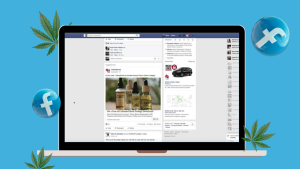 Facebook & Google’s Policies on CBD Advertising: What You Need to Know
Facebook & Google’s Policies on CBD Advertising: What You Need to Know
CBD Ads on Facebook can be tricky to get approved, especially with Facebook and Google’s strict advertising policies. If you’re promoting CBD products, it’s essential to understand how both platforms treat this niche to avoid disapprovals or even account bans. This guide breaks down the challenges and gives you actionable tips to get your CBD ads live — and stay compliant.
How Facebook’s Policies Impact CBD Ads on Facebook and Google
The restrictions around CBD ads on Facebook and Google are primarily due to regulatory uncertainties. Both platforms limit the promotion of ingestible CBD products such as oils, tinctures, and edibles. However, topical hemp-derived products like lotions, balms, and creams are generally allowed.
For advertisers, knowing where the line is drawn is critical. Running non-compliant ads not only leads to disapprovals but can also flag your entire ad account.
Key Differences Between Facebook and Google CBD Ad Policies
Although similar, there are subtle but important differences:
-
Facebook allows ads for topical CBD but restricts ingestibles and bans direct mentions of “CBD” in most ad creatives.
-
Google permits FDA-approved CBD products and some topical CBD ads through a whitelist program in select regions.
Understanding these differences helps tailor your campaigns for each platform’s rules and improves your success rate.
 Best Practices for Compliant CBD Ads on Facebook and Google
Best Practices for Compliant CBD Ads on Facebook and Google
Success starts with smart ad creation:
-
Avoid using “CBD” in headlines or copy — try alternatives like “hemp-derived wellness” or “plant-based skincare.”
-
Focus on non-ingestible products to reduce the risk of rejection.
-
Design your creatives and landing pages with compliance in mind — don’t include dosage info, medical claims, or unverified benefits.
Tip: Mention benefits like “supports relaxation” or “promotes skin hydration” instead of making bold health promises.
Common Mistakes to Avoid with CBD Ads on Facebook
Avoid these pitfalls:
-
Using before/after photos or health claims (violates ad guidelines).
-
Linking to landing pages that mention CBD prominently or make therapeutic claims.
-
Targeting restricted audiences, such as minors or medical communities.
Instead, focus your messaging on lifestyle and wellness — this keeps your ads within guidelines while still appealing to buyers.
Creating Effective Ad Copy for CBD Ads on Facebook
Good ad copy is subtle, benefit-oriented, and policy-compliant. Use terms like:
-
“Botanical skincare solution”
-
“Natural plant-based balm”
-
“Hemp-infused recovery cream”
Make sure your CBD Ads on Facebook direct users to clean, professionally written landing pages that avoid triggering keywords. The goal is to fly under the radar while still being effective.
 How to Maximize Success with CBD Ads on Facebook and Google
How to Maximize Success with CBD Ads on Facebook and Google
To get ahead:
-
Stay updated on changing ad policies (they evolve fast).
-
Regularly audit your ad creative and landing pages.
-
Test multiple versions of the same ad — slight tweaks can make a huge difference in approval rates.
Bonus tip: Use custom audiences and lookalike audiences to build trust with Facebook’s algorithm and reduce ad rejections.
Conclusion: Navigating CBD Ads on Facebook Successfully
Advertising CBD products is possible — even on strict platforms like Facebook and Google — if you understand the rules and build campaigns that work within them. Focus on non-ingestible products, avoid medical claims, and regularly optimize your content for compliance.
By following these strategies, you can launch CBD Ads on Facebook that not only get approved but also drive real results.



